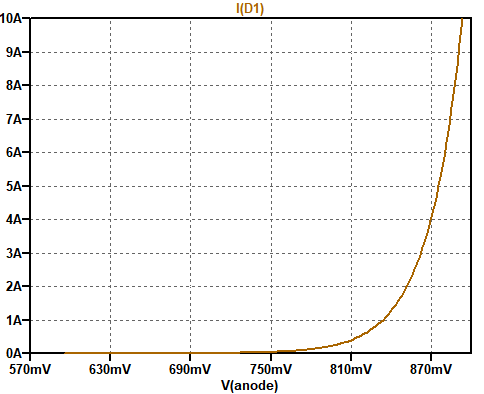No, you cannot. You have a misunderstanding of the function of those parameters. It's not really your fault or the fault of any typical SPICE user, since one would need a fundamental understanding of the underlying device equations used within the software to make sense of it.
Eg is described in SPICE documentation as the "Activation Energy" or the "Energy Gap" of the semiconductor material. Silicon defaults to 1.11eV, and it looks like you set this to 3.4eV for GaN. This is correct, but the effects of Eg in a SPICE diode model is for temperature dependence purposes as it modifies the effective values of the Is (saturation current) and Vj parameters based on simulation temperature. It has no effect on the DC (static) characteristics of the semiconductor itself. Vj (junction potential or built-in potential) itself also has no effect on the DC characteristics. It is purely used for modeling the junction capacitance along with Cjo, M, and Fc. See section 7.3 of the ngspice user manual for more details on the actual device equations.
The parameters of the standard SPICE diode model used to model the main DC characteristics are Is, N, and to a lesser extent Rs. There is a very good answer to an LED modeling question found here which outlines a procedure for empirically determining these values from a datasheet plot:
https://electronics.stackexchange.com/a/9543
If you want more direct control over the forward voltage (and/or reverse voltage) of a diode, you can use LTspice's alternate piecewise-linear model. I suggest using the Epsilon (and/or Revepsilon) parameter to smooth the transition regions for more stable SPICE convergence.
Lastly, if you want to use the piecewise-linear model along with a VDMOS MOSFET model, you can put an explicit diode across the MOSFET and disable its internal body diode by setting Is to zero (and also Cjo & tt if you want no capacitance effects). See the example below:





EgandVjsettings have no effect, because I guess they were intended for changing the diode material. \$\endgroup\$Egonly effects temperature dependence (not just onIs, but onVjtoo). However,Vjitself only affects the nonlinear junction capacitance. If you want to change the static DC characteristics, you need to adjustIs,N, andRs(as already mentioned). If you want more direct control over the forward voltage, it might be better to use LTspice's alternate piecewise-linear diode model along with theepsilonparameter. A great answer for working with the standard model can be found here: electronics.stackexchange.com/a/9543 \$\endgroup\$